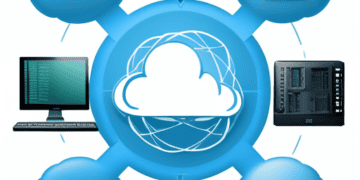In the era of the global online economy, the decline of geographical limitations has provided businesses the opportunity to operate across expansive regions, contrasting with the previously localized and compartmentalized nature of operations. The access to information has become a cornerstone for business success, with data utilization serving as a competitive edge. Nonetheless, this borderless business landscape also presents heightened risks, including various applications, systems, and end points that could serve as potential security vulnerabilities. Striking a balance between securing data and facilitating its accessibility has become a crucial endeavor for companies worldwide.
As businesses grow and adapt to new markets, often facilitated by cloud technology, data dispersion increases. This results in a broader surface area vulnerable to cyber threats. The advent of hybrid work models and the merging of ‘home’ and ‘office’ environments add layers of complexity to securing sensitive information. Often, businesses find themselves challenged by the heightened intricacies and risks that this expansion introduces.
Security management has transcended physical safeguards, which remain significant—like ensuring the physical security of server rooms and devices. The digital dimension of threats, while less visible, adheres to the principle that the overall strength of security is contingent upon its most vulnerable point, which is frequently the human element. Therefore, comprehensive security protocols must integrate educational components to bolster this frontline of defense.
The intertwinement of technology with daily life adds to the security challenge, as personal and business device usage becomes difficult to differentiate. Effective security measures require clear processes, stringent governance, a commitment to compliance, meticulous systems maintenance, and unwavering accountability, tailored to each organization’s unique structure. The equilibrium between security measures and user autonomy is delicate; excessive restrictions can stifle innovation, while leniency can lead to breaches and regulatory complications.
Focusing on the current state of data management is paramount, demanding an understanding of data flow within an organization, user interaction, and relevant regulatory frameworks. Identifying risks and implementing mitigation strategies is foundational for any business poised for growth, with information management underpinning the integration of new controls as required. Establishing these foundations necessitates regular assessments and audits to ensure ongoing relevance and effectiveness.
Engaging with a specialized partner can enhance these efforts, offering essential competencies, an objective perspective, and a suite of specialized skills and certifications that contribute to business continuity. Nevertheless, the selection of a partner demands thorough verification and due diligence to affirm their alignment with the business’s needs and objectives.
Discover supply chain news insights on The Supply Chain Report. Enhance your international trade knowledge at ADAMftd.com with free tools.
#TechGovernanceNews #GlobalEconomyNews #AccessControl #InformationManagementNews #SecurityStrategyNews

















